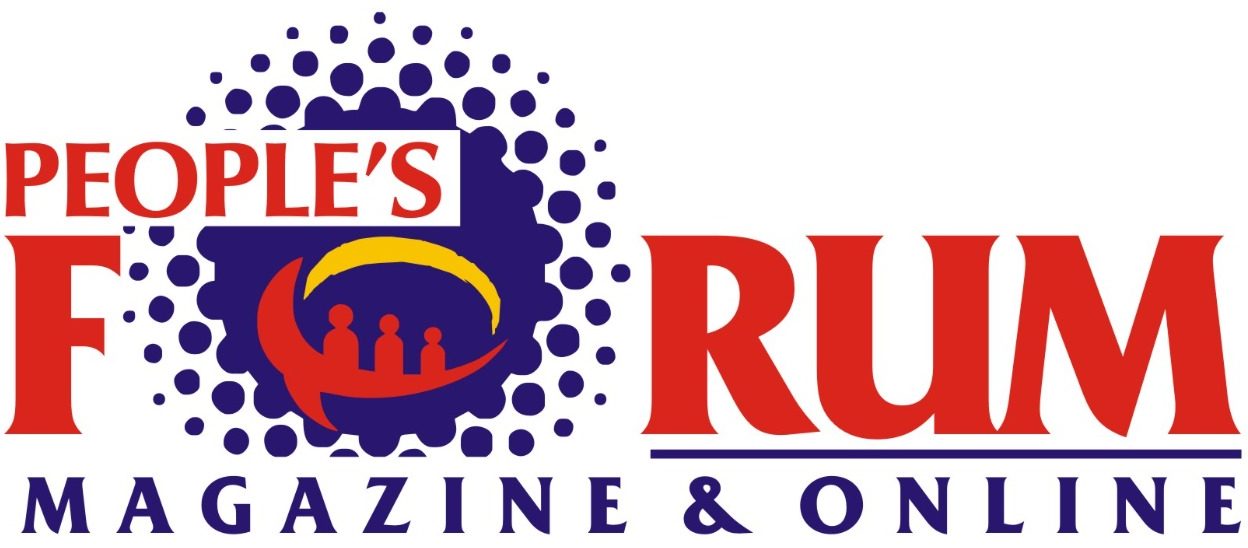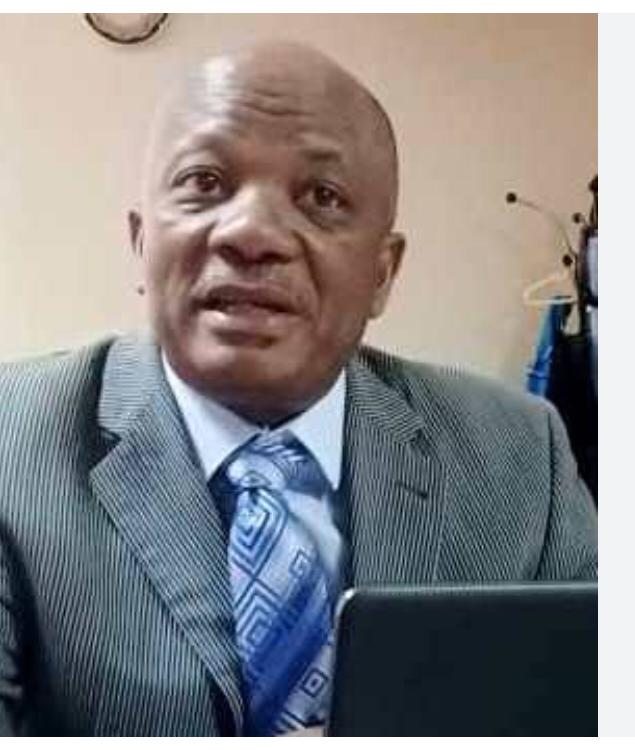The Secretary General, Abuja MoU, Capt. Sunday Umoren has called for collaboration and partnerships among stakeholder, saying that without collaboration, the benefits of the Blue Economy cannot be properly captured, utilized and sustained.
Umoren who delivered a paper at the 4th Annual Symposium and Workshop of African Marine Environment Sustainability Initiative (AMESI) noted that a nation, in mapping its available resources in its maritime cluster may be limited in its ability to totally or substantially benefit from the abundance in its maritime domain, hence the need for partnership.
He noted that maritime-related activities are capital intensive and may require novel ideas and skills that are not readily available.
He added that the demand of the Blue Economy increases with the distance from the baseline (increasing as its operation theatre moves from coastal areas, the Exclusive Economic Zones (EEZ) to the Deepsea (or high seas). In most instances, collaboration and partnerships provide the only means of actualising the prospects of the Blue Economy.
According to him, collaboration and partnerships could cover the following aspects- Funding, Marketing, Shareholding, Technology, Sustainability, Conservation, Policy formation, and Innovation; including Research and Developments, Logistics, Offtaking and any area of mutual agreement.
Umoren maintained that collaboration should be regulated with international best practices, noting that partners will most likely flow through different and arrays of countries guided.
“The legality should cover the maximum % share of ownership, employment, repatriation of funds and guided by the principle of Fairplay and Equity, and country of arbitration, should the marriage fall apart.”
The Abuja MoU scibe highlighted advantages of Collaboration and Partnership to include the followings:
• Reduced transaction costs and specialization
• Utilization of complementarities
• Utilization of local rivalry
• Technological transfer (Learning
• Innovation and international competitiveness
• Business profitability
• Growth in size; and
• internationalization.
He stated that available collaborations could be local, national and international or private, inter-governmental, Joint Ventures as in:
“1. Regional Cooperation (ECOWAS/ECCAS, AU, Abuja MoU, GMAC (Green Maritime Africa Coalition), the Lake Victoria Fisheries Organization (LVFO)
a. Description: A regional intergovernmental organization that promotes economic integration and cooperation among member states.
b. Focus: Collaborates on policies for sustainable fisheries, marine resource management, and environmental conservation.
2. The NLNG Model – Gas supplies, NLNG, BGT, NSML. For Gas supplies, shipowning, management of vessels.
3. Collaboration with International Commission for the Conservation of Atlantic Tunas (ICCAT). ICCAT is a regional fisheries management organisation responsible for the conservation of tunas and tuna-like species in the Atlantic Ocean and adjacent seas established by the International Convention for the Conservation of Atlantic Tunas in 1966.
4. Public-Private Partnerships (PPPs)
– Governments partner with private enterprises to invest in sustainable fishing practices, eco-tourism, and renewable marine energy. These partnerships can provide funding and innovative technologies.
5. Community Engagement
– Involving local communities in decision-making ensures that initiatives reflect their needs and knowledge. Programs often focus on sustainable fishing practices and marine conservation efforts, empowering local stakeholders.
6. Research and Academia
– Partnerships with universities and research institutions facilitate data collection and analysis essential for informed policy-making. Collaborative research initiatives help address local challenges such as biodiversity loss and overfishing.
7. International Collaboration
– Engagement with international organizations (like the UN, IMO, ILO, World Wildlife Fund (WWF) and NGOs enhances funding opportunities, technical support, and the sharing of best practices for sustainable marine management.
8. Capacity Building
– Training programs for local communities, fishermen, and government officials are vital for fostering skills in sustainable practices, marine resource management, and conservation efforts.
9. Technology Sharing
Collaborative efforts to share technology can enhance the monitoring of marine resources, improve fishing practices, and support the management ofAbuja MoU Scribe Harps on Collaboration, Partnerships for Utilisation of Blue Economy
The Secretary General, Abuja MoU, Capt. Sunday Umoren has called for collaboration and partnerships among stakeholder, saying that without collaboration, the benefits of the Blue Economy cannot be properly captured, utilized and sustained.
Umoren who delivered a paper at the 4th Annual Symposium and Workshop of African Marine Environment Sustainability Initiative (AMESI) noted that a nation, in mapping its available resources in its maritime cluster may be limited in its ability to totally or substantially benefit from the abundance in its maritime domain, hence the need for partnership.
He noted that maritime-related activities are capital intensive and may require novel ideas and skills that are not readily available.
He added that the demand of the Blue Economy increases with the distance from the baseline (increasing as its operation theatre moves from coastal areas, the Exclusive Economic Zones (EEZ) to the Deepsea (or high seas). In most instances, collaboration and partnerships provide the only means of actualising the prospects of the Blue Economy.
According to him, collaboration and partnerships could cover the following aspects- Funding, Marketing, Shareholding, Technology, Sustainability, Conservation, Policy formation, and Innovation; including Research and Developments, Logistics, Offtaking and any area of mutual agreement.
Umoren maintained that collaboration should be regulated with international best practices, noting that partners will most likely flow through different and arrays of countries guided.
“The legality should cover the maximum % share of ownership, employment, repatriation of funds and guided by the principle of Fairplay and Equity, and country of arbitration, should the marriage fall apart.”
The Abuja MoU scibe highlighted advantages of Collaboration and Partnership to include the followings:
• Reduced transaction costs and specialization
• Utilization of complementarities
• Utilization of local rivalry
• Technological transfer (Learning
• Innovation and international competitiveness
• Business profitability
• Growth in size; and
• internationalization.
He stated that available collaborations could be local, national and international or private, inter-governmental, Joint Ventures as in:
1. Regional Cooperation (ECOWAS/ECCAS, AU, Abuja MoU, GMAC (Green Maritime Africa Coalition), the Lake Victoria Fisheries Organization (LVFO)
a. Description: A regional intergovernmental organization that promotes economic integration and cooperation among member states.
b. Focus: Collaborates on policies for sustainable fisheries, marine resource management, and environmental conservation.
2. The NLNG Model – Gas supplies, NLNG, BGT, NSML. For Gas supplies, shipowning, management of vessels.
3. Collaboration with International Commission for the Conservation of Atlantic Tunas (ICCAT). ICCAT is a regional fisheries management organisation responsible for the conservation of tunas and tuna-like species in the Atlantic Ocean and adjacent seas established by the International Convention for the Conservation of Atlantic Tunas in 1966.
4. Public-Private Partnerships (PPPs)
– Governments partner with private enterprises to invest in sustainable fishing practices, eco-tourism, and renewable marine energy. These partnerships can provide funding and innovative technologies.
5. Community Engagement
– Involving local communities in decision-making ensures that initiatives reflect their needs and knowledge. Programs often focus on sustainable fishing practices and marine conservation efforts, empowering local stakeholders.
6. Research and Academia
– Partnerships with universities and research institutions facilitate data collection and analysis essential for informed policy-making. Collaborative research initiatives help address local challenges such as biodiversity loss and overfishing.
7. International Collaboration
– Engagement with international organizations (like the UN, IMO, ILO, World Wildlife Fund (WWF) and NGOs enhances funding opportunities, technical support, and the sharing of best practices for sustainable marine management.
8. Capacity Building
– Training programs for local communities, fishermen, and government officials are vital for fostering skills in sustainable practices, marine resource management, and conservation efforts.
9. Technology Sharing
Collaborative efforts to share technology can enhance the monitoring of marine resources, improve fishing practices, and support the management of marine protected areas. Innovations such as satellite tracking and data analytics play a significant role.
10. Climate Change Adaptation
– Partnerships focused on climate resilience, helping coastal communities adapt to changing environmental conditions, and integrating ecosystem-based approaches into development planning.
11. Policy Development
– Sound policies are crucial to a sustainable blue economy and the proper collaboration of all stakeholders ensures the formation of good policies that will drive the economy.
Dealing with the theme: “Achieving Blue Growth in a changing climate (Integrating the coastal communities) and the topic “Collaboration and Partnership in Driving Blue economy”, Umoren
hinted that it’s not possible to progress to dealing with the collaborations and partnerships without having a bit of refresher on Blue Economy which creates a substantial number of jobs and economic opportunities worldwide.
He cited data released in Europe at the beginning of the 2020s showing that the EU blue economy employs over 3.6 million people, has a turnover exceeding €620 billion, and accounts for €171 billion in Gross Value Added (GVA). Offshore wind energy, shipbuilding and repair, maritime transport, marine living resources, and port activities demonstrate the most significant increase in nominal GVA.
The Blue Economy, he stated, encompasses all economic activities based on or related to the ocean, seas, and coasts. “This includes a wide variety of economic sectors, such as fisheries and aquaculture, coastal tourism, shipping, ports, marine renewable energy and etc. The world depends on the ocean for trade, food, energy, tourism, transport recreation and general sustenance and many other goods and services”.
He noted that three oceanic regions are identified and used in articulating the ocean economy, and they are the coastal areas, the Exclusive Economic Zones (EEZ) and the Deepsea (or high seas). UNCLOS defines the distances and authorities of these ocean regions.
“The extraction of resources on these regions are also govern by States and International regulations as designated by the United Nations.
“Port Economics banded the related activities under three distinct groups (Harvesting of living resources, Extraction of non-living resources and Maritime trade and commerce).
The drivers are as listed and include the new revenue head, food security, energy demand etc,” he said.
He defined Blue Economy as ‘any economic activity of the high seas and related operations in /above all waters connected there-to /therewith; it shall include activities there-about and there-in as approved by an appropriate authority or country. The waters include roadsteads, harbours, rivers, lakes or inland waterways connected with the high seas.
He gave three major aspects to the Blue Economy as: (1) Maritime Clusters, (2) Stakeholders’ identification and engagements and (3) The need for Collaboration and Partnership
He restated that it’s impossible to delve into the subject of collaboration and partnership without first identifying the maritime clusters with the sectors in which they could create a niche and conducting capacity and capabilities assessment before deciding on the areas that may need support (collaboration and partnerships) and finally courting and selecting the best partners.





